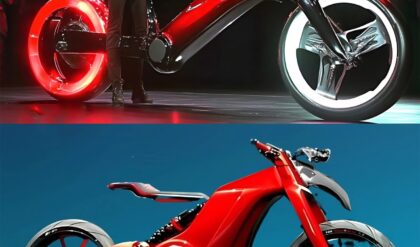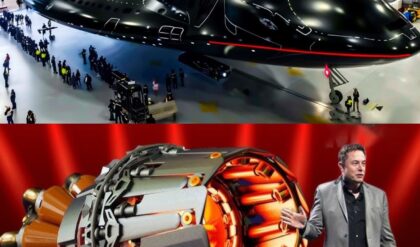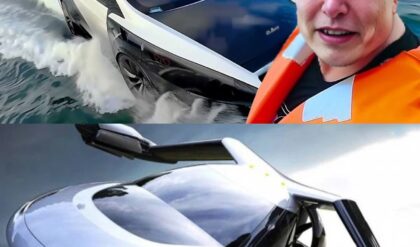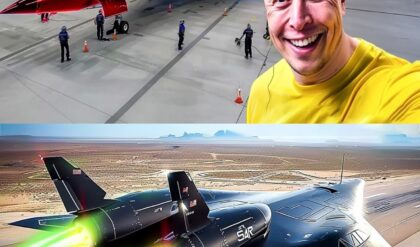The M22 Locust is One of the Smallest Tanks Ever

The M22 is a very cool, very popular little tank that is pretty much entirely known for its miniscule size. Its around the same size as a Mini Cooper, which for a tank, is tiny. This was for a reason though, as it could be carried by an aircraft.
The Locust, as it was known to the British, was so small that it could be transported to its destination via an aircraft. However, the fact that it had to be carried under the belly of a transport with its turret removed sort of defeated the point of the concept.
Still, the M22 is one of the earliest examples of a truly air transportable tank, an idea that would be worked on for decades after.
Background
Attempting to give tanks the ability to fly, or be transported through the air, was an inevitable part of their evolution. Tanks are necessary to take and control ground in battle, but they have to get there first.
Imagine if they could be delivered directly to the battlefield from the air. This would dramatically increase their tactical usefulness, as they could be dropped into any location very quickly without having to first drive and fight through the enemy’s defenses.
However, such vehicles would be most useful to the airborne. Airborne forces often lack heavy firepower due to everything having to be dropped out of an aircraft first.
 The USSR tried a few different approaches to airdropping tanks. One included literally dropping a tank with straight onto the ground a low altitude.
The USSR tried a few different approaches to airdropping tanks. One included literally dropping a tank with straight onto the ground a low altitude.
If they want tanks, they have to wait to link up with them once they’ve penetrated deep into the enemy’s lines. So, having a tank that could drop in with them and be used instantly, would be a great advantage.
The tactical benefits of large numbers of tanks causing chaos behind enemy lines are obvious.
Work before the Second World War had already investigated this concept, with the Soviet A-40 perhaps being the most famous example.
 The Soviet A-40 is perhaps the most famous example of a “flying tank”. This image is either a drawing or mock-up and shows a T-60 light tank fitted with detachable wings.
The Soviet A-40 is perhaps the most famous example of a “flying tank”. This image is either a drawing or mock-up and shows a T-60 light tank fitted with detachable wings.
A few different approaches to air-transporting tanks were tried. These involved parachute dropping them, carrying them in gliders, gliding them in with their own detachable wings, or carrying them under the fuselage of a powerful transport aircraft.
Naturally, only small tanks – with limited capabilities – had any chance of being carried due to their weight. As a consequence, nations had little success with the idea, but it never faded.
In early 1941, representatives of the US Army Air Force, Ordnance Department, and Armored Force created a basic specification for a purpose-built airborne tank designated T9.
Rather than be fitted with wings, the T9 was to be carried under the belly of a transport aircraft. Weight was to be around 7.5 tons empty, and its dimensions were to be very small to keep it as light as possible.
The T9 was to have a fully rotating turret, in which would be a 37 mm gun serving as the tank’s main armament.
Manufacturers GMC, Marmon-Herrington, and J. Walter Christie, the famed designer of the “Christie” suspension, all proposed drafts that they hoped would satisfy this requirement.
Christie’s submission… well… it wasn’t what the requirements asked for, so he was out of the running.
 Christie’s proposal, the M1942. It was too long and didn’t have a turret.
Christie’s proposal, the M1942. It was too long and didn’t have a turret.
Marmon-Herrington’s proposal used components from their earlier CTLS light tank, and had four vertical volute spring suspension bogies, a rear-mounted engine, and a front-mounted transmission.
By late summer 1941, the aircraft that would carry the T9 was established: it was the Douglas C54. The C54 was still in development itself, but it would eventually become a highly successful aircraft.
The T9 was to be carried under the C54, and to make sure it would fit, the tank’s wooden mock-up was sent to the Douglas Aircraft Company. The tank could indeed be carried by the aircraft, but only with the turret removed and placed inside the C54’s fuselage.
 The Douglas C54 Skymaster, shown here, was to be the transport method of choice for the T9.
The Douglas C54 Skymaster, shown here, was to be the transport method of choice for the T9.
The turret was designed with this in mind, and was easy to remove using the aircraft’s own equipment, but as the C54 would still need to land on a runway, it could be deployed directly onto battlefields.
The first complete pilot model for the T9 was completed in April 1942, constructed from soft steel. The front hull of this vehicle was stepped, to accommodate the driver and the transmission at the front. In addition, on the right side of the vehicle were two fixed machine guns.
These were fired by the driver, and reloaded by the commander.
 The M22’s earliest guise, the T9. Note the stepped hull front and two bow machine guns.
The M22’s earliest guise, the T9. Note the stepped hull front and two bow machine guns.
While the general design was acceptable, a few design changes were recommended. This included strengthening the suspension (evidenced by the bars running between the bogies), and replacing the front plates with a single, well-sloped plate.
In addition, it was found to be be slightly overweight, so engineers were forced to remove the bow machine guns, the turret’s power traverse mechanism, and the gun’s gyro-stabiliser to shed some weight.
This updated version was designated the T9E1, and a pilot model was built before the end of 1942. A second T9E1 was sent to the UK for evaluation.
 The T9E1. Note the single, angled front plate. Also note the lugs above each bogie on the hull – these are the attachment points for the C54.
The T9E1. Note the single, angled front plate. Also note the lugs above each bogie on the hull – these are the attachment points for the C54.
The UK was working on the Hamilcar glider at the time, which was capable of transporting a lightweight tank like the T9E1 straight into battle.
With both the UK and US satisfied with the vehicle, it entered production in April 1943. It wouldn’t be until December 1944 that the T9E1 was renamed the Light Tank, M22.
In British service, it was known as the Locust.
M22 Locust’s Design
The M22 is one of the smallest tanks ever built. Unlike many other small tracked vehicles, like the M56 Sorpion or TKS tankette, the M22 retains the proportions of a standard tank, despite its diminutive size.
In fact, it looks like a miniature Sherman tank.
 The M22’s layout followed that of a conventional tank.
The M22’s layout followed that of a conventional tank.
It has a conventional layout for the day, with its gearbox and drive sprockets at the front, the turret in the middle, and the engine at the rear.
It is operated by a crew of three people: the driver, who sits at the front left of the hull, the gunner, in the left side of the turret, and the commander, on the right side of the turret.
As it lacked a dedicated loader, the commander also doubled as the loader.
In front of the driver is the manual transmission, with four forward gears and one reverse gear. The final drives and drive sprockets are also located at the front of the tank.
 Close view of an M22’s securing points inside a Hamilcar glider.
Close view of an M22’s securing points inside a Hamilcar glider.
Power comes from a 7.1 litre (434 cu in), horizontally opposed, six cylinder, air cooled petrol engine. This engine, a Lycoming O-435T, produced 190 hp and 360 ft-lb of torque.
While this is a rather paltry output, the small size of the tank meant it actually gave good performance.
The M22 was just 3.96 meters (156 in) long, which for a turreted tank, is tiny. For scale, this is just 10 cm (4 in) longer than a 2022 Mini Cooper. Width was 2.25 meters (88 in), and height was only 1.8 meters (72 in) – slightly taller than the average male.
 The O-435T was an aircraft engine, and was air cooled.
The O-435T was an aircraft engine, and was air cooled.
This small size reduced the amount of area that had to be covered by armor. Typically, this can allow designers to thicken the armor up to compensate, but the M22 was very lightly armored.
The front-most part of the hull was 25 mm (1 in) thick, while the upper glacis was 13 mm (.5 in), angled at 65 degrees. This produced an effective thickness of 30 mm (1.2 in). At the top of the upper glacis was a bulge that housed the driver, this was 25 mm thick.
The sides and rear of the hull ranged between 10 and 13 mm (.4-.5 in) thick.
The turret had slightly better armor, with 25 mm all over except the top, which was 10 mm.
 The front glacis was well-angled, which significantly increased its effective thickness.
The front glacis was well-angled, which significantly increased its effective thickness.
Of course, this a very thin armor scheme that wouldn’t stand up to any form of anti-tank weaponry, but it could stop small arms fire. If you were an infantryman with a rifle, there wouldn’t be much you could do against it.
All in it weighed 8.2 tons (16,400 lbs) fully loaded, while empty it weighed (14,600 lbs) 7.3 tons. Its 190 hp engine was able to get it up to a good top speed of 35 mph (40 kph).
For its very light weight and small size, the M22 carried respectable firepower. Its main armament was a the same 37 mm M6 gun used in the Stuart, a bigger tank that weighed twice as much.
 The suspension bogies were reinforced with the bars seen here.
The suspension bogies were reinforced with the bars seen here.
This was in part due to the M22 actually having a larger turret ring than the Stuart, which allowed for the fitment of a disproportionately large gun.
Although by 1943 standards this gun was not exactly a devastating weapon, it had been developed as an anti-tank gun, and could penetrate 30-50 mm of steel depending on the range.
Some British M22s were fitted with a “Littlejohn” device on their guns. This would attach to the gun’s muzzle, and squeezed a specialist type of ammunition as it passed through. This greatly increased its muzzle velocity and penetration.
 The M22, with its easily removable turret. Image credit: afvdatabase.com
The M22, with its easily removable turret. Image credit: afvdatabase.com
The M22 in Service
A total of 830 M22s were built by Marmon-Herrington in total. They could be successfully carried by the C54, albeit with the turret removed.
To load the M22 under the aircraft, it would first park next to the cargo door. The turret would then be lifted off the hull with the C54’s on-board hoist and placed inside the fuselage. The hull would then be driven to the front and parked directly under the C54’s belly.
The M22 would be winched up and secured to the aircraft with four locks. Reportedly, this entire process could be completed in around half an hour.
 An M22 suspended below a C54.
An M22 suspended below a C54.
To unload, the operation would be done in reverse, although this time the M22 was simply dropped onto the ground, rather than lowered with a winch.
While this system technically worked, it pretty much defeated the purpose of an airborne tank. An aircraft like the C54 isn’t exactly something you can land in a farmer’s field so the M22 can get straight into action.
The M22 did not see any combat with US forces during the war, but were used on one occasion by the British.
 A Locust inside a British Hamilcar glider. Note how it is secured to the aircraft via its rear lugs.
A Locust inside a British Hamilcar glider. Note how it is secured to the aircraft via its rear lugs.
Britain had received 260 M22s, which they knew as the Locust. They were arguably more suited to operating the tank, as it could fit inside a Hamilcar glider completely assembled.
This meant it was possible to more closely follow the typical idea of the airborne tank concept; delivering it directly into the combat zone.
This very thing happened in March 1945 during Operation Varsity. Eight M22s were carried in Hamilcar gliders, although two were lost before leaving the gliders.
 An Locust in British service leaving a Hamilcar glider.
An Locust in British service leaving a Hamilcar glider.
The tanks assisted in operations over the next few days, and were eventually replaced by more capable tanks.
After the war, Britain sold many of its M22s to foreign countries, as it now longer had any use for them. Egypt received the most with a total of 50, and put them to use in the 1948 Arab–Israeli War.
Today there are quite a few M22s remaining, including in the UK, Belgium, Israel, and the Netherlands. Most are located in the United States.





